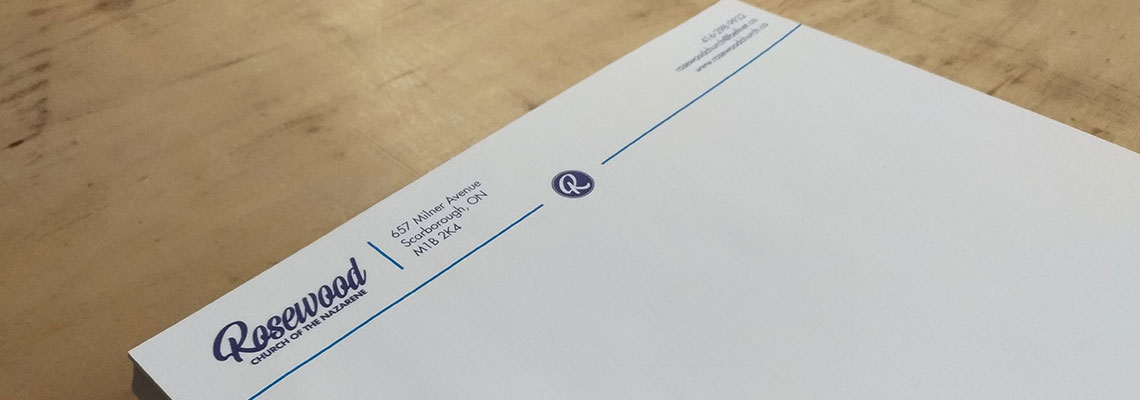

Photo Credit: Angela Heidt[/caption]
Your business letterhead is an important (some would say vital) marketing tool, one that should never be overlooked. Not only does it communicate your company’s brand via marketing communications, it helps to establish credibility and ensures that all who receive your communications understand that your company is here to stay, whether in print or via digital communication methods. Do not underestimate the value of a clean, elegant letterhead design to tell more about your company than your tagline, remember that a picture is worth 1,000 words.
However, most small businesses these days send a lot more marketing communications electronically than via print – which brings up the question of whether printed letterhead is really needed at all, particularly if your small business rarely sends out printed marketing material. Is it worth it to have both printed and electronic letterhead – or should you save the cost and stick to digital letterhead only?
Both print and digital options have their own specific advantages and disadvantages; let’s explore them so your small business can make an informed choice of whether you need print or digital letterhead, or perhaps a combination of both.
Printed Letterhead
Running a small business, particularly marketing a small business, involves an investment, one that may not provide an immediate or discernible return. It can be tempting to save on print marketing costs where possible (especially if you are just getting started), particularly when the investment appears to yield so little result. As most printers require a minimum print run of 500 pieces, with 1000-2000 pieces offering a more affordable price point, many businesses see the decision to save on printed letterhead and stick to digital as wise.
For those who do choose to print business letterhead, there is a disadvantage in its permanence. A logo update, address change, name change, etc. requires a reprint of letterhead – increasing the cost to your small business as all the old letterhead is thrown away. If you are at all unsure about where your business will be located for the long term (say the next 2 years), by all means you may want to put off a major print purchase.
So what are the advantages? For one, it gives your small business an immediate feel of permanence and professionalism, particularly when you contract a good printer and use high-quality paper. Printing letterhead from your own printer is not the same – the difference in technology means that your printer needs to leave a margin around the edge, whereas professional printers print your letterhead on a larger piece of paper and then it’s cut down, so any colors can go right to the end of the page referred to as a bleed), for a more polished effect.
When it comes to portraying your company as an established, professional entity printed letterhead cannot be beat.
Digital Letterhead
It’s not hard to see the advantages of digital letterhead – it’s free! At least, once it’s been designed. If there is a change down the road, such as a new logo or address change, it can be quickly and easily updated. Your header (logo, address, etc.) can be contained in a separate file and easily added to Microsoft Word files, emails, or websites. Documents containing your letterhead can then be printed, or saved as a PDF and attached to an email for instantaneous delivery and viewing.

Choosing digital letterhead, besides being economical, is also environmentally-friendly – since you are only printing what you choose to print, rather than printing a huge batch of letterhead that may or may not be utilized. The majority of communications can be sent electronically, saving your small business the cost of the letterhead, as well as mailing.
Sounds pretty good, doesn't it? What’s missing here is the overall effect; digital letterhead just doesn’t look nearly as good as professional printing, no matter how good of a printer you have. If you choose to send printed digital letterhead to your clients, prospects, or vendors, you’re not putting your best face forward. If your aim is to impress upon your readers your company’s permanence and professionalism, digital letterhead is not your best option.
Finally, when you are emailing digital letterhead you have to depend on your reader to be able to open and view the file. Occasionally you may encounter a recipient that won’t be able to open the file, in which case you’ll have to find an alternate method, such as mail.
Which should you choose – digital or print?
Choosing Letterhead
How should you choose the ideal type of letterhead? First, decide on its use:
- Writing correspondence
- Letters of introduction
- Direct mail
- Invoices (electronic or via mail)
- Sending proposals, estimates, contracts, questionnaires, forms
- Reprinting articles, speeches, handouts
- Submitting orders
Some of these uses call for digital letterhead (such as invoices or forms), others are more suited for print.
How likely are you to send printed correspondence? Using digital letterhead can of course be transmitted more quickly, which is more suited to contacts of a time-sensitive nature; such as on boarding new customers, sending invoices, or replying to queries.
In which format do you think your customers would like to receive their correspondence? If you’re catering to environmentally-conscious consumers then digital correspondence will be more in line with your message; while catering to professionals or luxury clients may require a more sophisticated presence.
When you weigh the advantages and disadvantages of digital versus print letterhead, its use, and the needs of your recipient, you’ll likely realize that your company needs both types of letterhead – both the convenience of digital as well as the luxury and quality of print. However, making the investment in printed letterhead should not be taken without some thought – particularly if you are considering a move, change of logo, or design then you may want to put off your letterhead order until your business is firmly established and stick with your digital letterhead in the interim.
If you are ready to commit to printed letterhead, your first step is to find a good graphic designer to work with you to incorporate your logo and business details seamlessly, so your small business always presents a polished, cohesive image to the public.



Leave a Comment